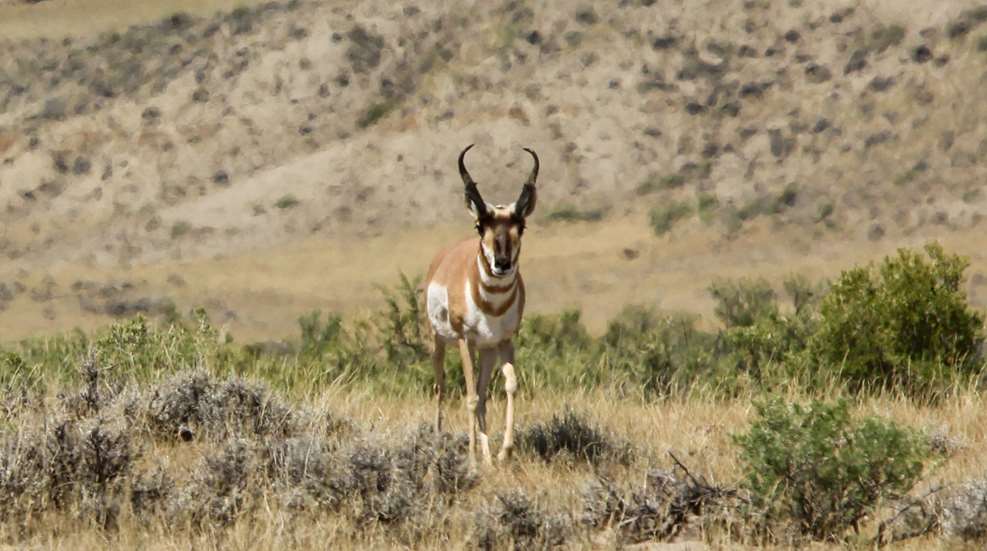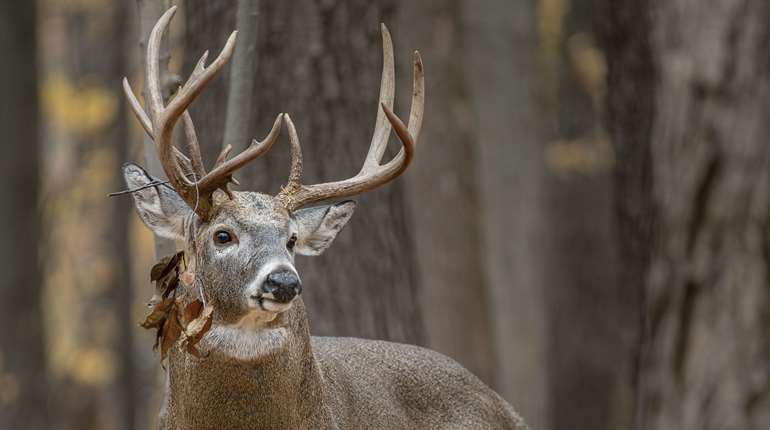
Few of us appreciate being mischaracterized. Mischaracterizing others could be costly, including pronghorn. Misreading these American originals could tank your hunt. Yes, pronghorn are classified as big game and may be labeled next to deer in game regulations, but the similarities end there. Clear up the misconceptions on this open-country occupant to ensure success when you get an opportunity to go head-to-head with this unique species.

A True Last of the Mohican Holdout
Unlike the deer family, with cousins everywhere in America, pronghorn are “The Last of the Mohicans.” With a fossil lineage that dates back millions of years to the Miocene epoch, the pronghorn is the only surviving member of the Antilocapridae family. Yes, it is true. One of their closest living relatives— the giraffe— resides comfortably in zoos across the country.
Pronghorn do not have antlers, like the whitetails you commonly hunt. Instead, males grow a forked or pronged set of horns constructed of keratin, a stiff, hair-like matter that holds up well. Pronghorn use these horns for dominance, breeding rights and even predator defense. I have witnessed many pronghorn fights and even saw two lock up with one flipping the other over its back to end the UFC cage fight.
Despite what your peers scoff, pronghorn meat is delicious when handled correctly. My family ranks pronghorn right under elk and above deer while planning dinner menus. Work hard to get a one-shot kill, skin the animal ASAP, be careful to not contaminate the fresh meat and get it on ice. A little aging never hurts to enjoy the rewards of a true wild game delicacy.
Of course, to get to that point, you need to overcome common misconceptions that could derail your dinner.
A Walking Surveillance System
Whitetails have senses evolved in a forest environment that easily surpass most prey species. Take that set of skills, plop them in an open environment and simmer for several million years. This recipe results in a walking surveillance system that challenges the savviest of hunters. Do not underestimate pronghorn homeland inspection scrutiny.
Cut to the chase. Pronghorn eyeballs easily beat your binocular-aided vision. Forward facing and wide set eyeballs provide pronghorn with peripheral vision of approximately 320 degrees. Research suggests these bulging optical units have an equivalency to you placing a 6- to 8-power binocular to your own eyes. They spot movement easily across their home landscape and even when you approach from behind a slight swivel of the head gives them a view of your ambush.

Leave your Asics running shoes at home. Pronghorn will leave you in the dust. Clocked at speeds exceeding 55 mph, pronghorn also top the list as North America’s fastest land animal. That dash evolved from outpacing the now extinct American cheetah but works equally well to dart away from orange-clad hunters. The good news: Despite this impressive speed it is a dash, and, as pronghorn studies show, unless constantly pressured by nimrods that dash often brakes at 500 yards. Duck out of sight and wait for the herd to calm then resume your stalk from a hidden ravine.
Another evolutionary advantage impressively fades into the background via a camouflaged coat Sitka would be proud to have invented. While glassing from a veiled vantagepoint, scan slowly and look for white throat and belly patches, plus black snouts. The tan body banding often disappears in the drab backdrop of the prairie.
And although not touted like eyesight, pronghorn do have olfactory senses working in their favor. It pays to stay downwind and it never hurts to douse your gear with a quality scent elimination system such as Wildlife Research Center’s Scent Killer Gold.
Practice Long, Be Ready for Normal
Another misconception that follows pronghorn makes you believe all shots have an arc landing. Think long, but extreme does not have to be the main strategy in the shooting playbook. Sure pronghorn live in topography that hints at long launches, but study the geography closely and you see chinks in their openness armor.
Rolling terrain, uplifts, ridges, dry creek beds and tall sagebrush provide generous amounts of cover when opportunity knocks. After decades of pronghorn hunting, I have yet to shoot one beyond 500 yards. Most shots range from 200 to 300 yards with much of that due to fancy footwork. Using the natural features of the land, aided by overhead satellite hunting app confirmation, mapping a course to close the distance occurs more often than not.
Spending $7,000 on a custom rifle, load and tailored optics may be in the budget for some, but sneakiness saves you dollars. A quality, off-the-shelf rifle zeroed with a dependable load works wonders on pronghorn. Keep your butt down. Avoid constant peeking and work your way into range out of pronghorn eyesight. When you cut the distance, crawl to a high spot, do not walk, and take the shot prone if possible. Satisfaction could even top tagging a buck at 600 yards by sniping one from 250 yards without the herd knowing you were ever in the ZIP code.

Fool Me Once …
Finally, be ready for some paranoid behavior on pressured pronghorn. Once rattled, pronghorn have no aversion to leaving a fall territory. Migratory by nature, they understand traveling can take them to winter sanctuary or away from predators like you. That 55-mph burst only lasts a fleeting time, but those nimble, long legs can carry their lightweight bodies extreme distances. Be prepared to scour miles of open ground if you discover a deserted desert.
A positive for finding pronghorn also has an evolutionary history. They do not live a nocturnal lifestyle. Instead, they feed, water and lounge during daylight instead of the Dracula lifestyle pressured elk and deer follow. Hit high locations. Do a scan with your binocular and move on until you find a distant herd.
And although the concept of flagging or the tactical use of decoys may work, they have little use during a firearm season. For starters, a decoy could get you shot, and once pronghorn begin looking over their backs for hunters, seeing a waving white flag has little appeal opposed to a possible curiosity reaction possible in archery season.
A pronghorn hunt truly continues the tradition of a real American safari. Realize that these holdover relics live a different lifestyle than the whitetails you customarily hunt and strategize accordingly.



































